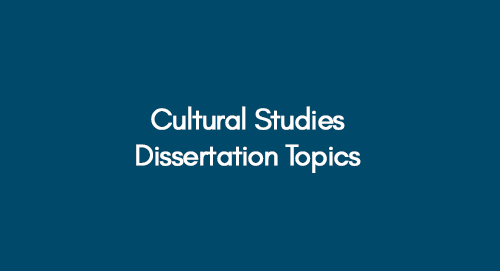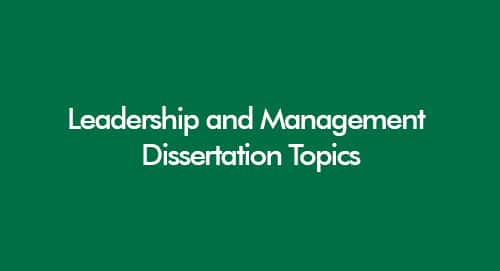
125+ Quality Cultural Studies Dissertation Topics in 2025
November 17, 2022How to Cite Sources in IEEE Format: In-Text Citations and References
November 17, 2022Art is the craft of expressing creative and imaginative ideas of an artist, typically to explore the beauty of nature. Art encompasses various forms such as painting, sculpture, music, literature, dance, and more. It is prevalent in the world, from the Beatles' music to Leonardo da Vinci's Mona Lisa painting. In academics, history is filled with much of the art research. Therefore, students must choose quality and appealing art dissertation topics to stand out in their research.
Fine Art Dissertation Examples
Premier Dissertations has produced a list of new dissertation topics in arts for 2025.
List of Latest Arts Research Topics 2025
List of Best Thesis Topics in Art
Trending Research Topics in Art
Quality Art Research Topics for Undergraduate Students in 2025
Topic 16. Analysing the Impact of Public Art Installations on Urban Communities in the UK: A Case Study
Topic 17. Examining the Role of Digital Art in Redefining Contemporary British Culture: A Systematic Study
Topic 18. Assessing the Popularity of Traditional Portraiture in UK Art Galleries: A Quantitative Study
Topic 19. Understanding the Relationship Between Street Art and Social Movements in the UK: A Qualitative Study
Topic 20. Evaluating the Effect of Art Therapy on Mental Health Recovery in UK Youth: A Case Study
Topic 21. Analysing the Role of Cultural Festivals in Showcasing Regional Art in the UK: A Systematic Study
Topic 22. Examining the Influence of Globalisation on the Themes in British Contemporary Art: A Qualitative Study
Topic 23. Assessing the Role of Virtual Reality in Enhancing Art Education in the UK: A Quantitative Study
Topic 24. Understanding the Representation of Climate Change in Modern UK Sculptures: A Case Study
Topic 25. Evaluating the Preservation of Historical Art in UK Museums Post-Pandemic: A Systematic Study
Topic 26. Analysing the Effect of Social Media Platforms on Emerging Artists in the UK: A Qualitative Study
Topic 27. Examining the Role of Art in Promoting Inclusivity and Diversity in British Workspaces: A Quantitative Study
Topic 28. Assessing the Impact of Local Government Initiatives on the Development of Public Art Projects in the UK: A Case Study
Topic 29. Understanding the Representation of War and Conflict in British Postmodern Art: A Systematic Study
Topic 30. Evaluating the Contributions of Women Artists to Contemporary UK Art Movements: A Qualitative Study
Topic 31. Analysing the Role of Art Criticism in Shaping Public Perception of Contemporary Art in the UK: A Case Study
Topic 32. Examining the Integration of Artificial Intelligence in British Art Installations: A Quantitative Study
Topic 33. Understanding the Role of Independent Art Galleries in Supporting Emerging UK Artists: A Qualitative Study
Topic 34. Assessing the Role of Cross-Cultural Collaborations in Shaping British Art Exhibitions: A Systematic Study
Topic 35. Evaluating the Effectiveness of Online Art Competitions in Promoting New Talent in the UK: A Case Study
Topic 36. Analysing the Impact of Climate Activism on the Themes of UK Contemporary Art: A Qualitative Study
Topic 37. Examining the Role of Interactive Art in Enhancing Visitor Engagement in UK Museums: A Quantitative Study
Topic 38. Understanding the Historical Influence of Colonialism on British Art Collections: A Systematic Study
Topic 39. Assessing the Impact of Art Residencies on Rural Communities in the UK: A Case Study
Topic 40. Evaluating the Role of Public-Private Partnerships in Supporting Large-Scale Art Projects in the UK: A Systematic Study
Topic 41. Analysing the Use of Data Visualisation in UK Art Installations to Address Social Issues: A Qualitative Study
Topic 42. Examining the Impact of Art Education on Social Mobility in Underprivileged UK Areas: A Quantitative Study
Topic 43. Understanding the Representation of LGBTQ+ Narratives in Contemporary British Art: A Case Study
Topic 44. Assessing the Role of Government Grants in Sustaining UK Public Art Programs: A Systematic Study
Topic 45. Evaluating the Influence of Global Art Fairs on UK Artists’ International Careers: A Qualitative Study
Topic 46. Analysing the Evolution of Feminist Art in the UK Since the 2000s: A Systematic Study
Topic 47. Examining the Role of Collaborative Art Practices in Promoting Sustainability in the UK: A Quantitative Study
Topic 48. Understanding the Representation of Disability in UK Contemporary Art: A Qualitative Study
Topic 49. Assessing the Impact of Artist-Led Communities on Urban Development in the UK: A Case Study
Topic 50. Evaluating the Role of UK Art Institutions in Addressing Cultural Heritage and Ownership Issues: A Systematic Study
Art Research Topics for Master Students in 2025
Topic 51. Analysing the Role of Virtual Reality in Revolutionising Art Exhibitions in the UK: A Case Study
Topic 52. Examining the Influence of AI-Generated Art on Traditional Art Practices in the UK: A Systematic Study
Topic 53. Assessing the Effectiveness of Government Policies in Supporting Emerging Artists in the UK: A Quantitative Study
Topic 54. Understanding the Role of Art Therapy in Enhancing Emotional Well-Being Among UK Veterans: A Qualitative Study
Topic 55. Evaluating the Representation of Migrant Experiences in Contemporary British Art: A Systematic Study
Topic 56. Analysing the Cultural Impact of Major Art Biennales on Local Communities in the UK: A Case Study
Topic 57. Examining the Role of Corporate Sponsorship in Shaping Public Art Projects in the UK: A Quantitative Study
Topic 58. Assessing the Significance of Sustainability Themes in UK Contemporary Art Installations: A Qualitative Study
Topic 59. Understanding the Representation of Digital Cultures in UK University Art Curricula: A Systematic Study
Topic 60. Evaluating the Role of Public Art in Promoting Environmental Awareness in Urban UK Areas: A Case Study
Topic 61. Analysing the Evolution of Graffiti as an Accepted Art Form in the UK: A Qualitative Study
Topic 62. Examining the Impact of Brexit on International Collaborations Within the UK Art Scene: A Quantitative Study
Topic 63. Assessing the Role of Online Art Platforms in Increasing Accessibility to British Art: A Systematic Study
Topic 64. Understanding the Use of Art in Protests and Activism Across the UK: A Case Study
Topic 65. Evaluating the Effect of the Pandemic on UK Art Galleries’ Visitor Engagement Strategies: A Qualitative Study
Topic 66. Analysing the Representation of LGBTQ+ Themes in British Digital Artworks: A Systematic Study
Topic 67. Examining the Role of Cross-Cultural Collaborations in UK Art Movements Since 2000: A Quantitative Study
Topic 68. Assessing the Role of Regional Museums in Preserving Local Art Traditions in the UK: A Qualitative Study
Topic 69. Understanding the Influence of Global Art Markets on Pricing Trends in the UK Art Scene: A Systematic Study
Topic 70. Evaluating the Impact of Augmented Reality (AR) on Interactive Art Installations in the UK: A Case Study
Topic 71. Analysing the Role of Community Art Projects in Bridging Socioeconomic Divides in the UK: A Systematic Study
Topic 72. Examining the Impact of Digital NFTs on the Traditional Art Ecosystem in the UK: A Quantitative Study
Topic 73. Assessing the Role of Art Installations in Addressing Climate Change Narratives in the UK: A Qualitative Study
Topic 74. Understanding the Evolution of Female Representation in UK Sculpture: A Systematic Study
Topic 75. Evaluating the Role of Pop-Up Art Galleries in Revitalising British Urban Areas: A Case Study
Topic 76. Analysing the Influence of British Art Councils in Shaping Contemporary Art Practices: A Qualitative Study
Topic 77. Examining the Role of AI in Developing Customised Art Experiences for UK Viewers: A Systematic Study
Topic 78. Assessing the Economic Contributions of Art Auctions to the UK Economy: A Quantitative Study
Topic 79. Understanding the Role of Art Journals in Shaping Critical Discourses on British Art: A Case Study
Topic 80. Evaluating the Adoption of Eco-Friendly Materials in UK Contemporary Art: A Systematic Study
Topic 81. Analysing the Role of Photography in Documenting UK Cultural Heritage Sites: A Qualitative Study
Topic 82. Examining the Impact of Digital Marketing on UK Art Galleries’ Visitor Numbers: A Quantitative Study
Topic 83. Assessing the Role of Collaborative Studio Spaces in Fostering Creativity Among UK Artists: A Systematic Study
Topic 84. Understanding the Impact of the Deindustrialisation of Northern UK Cities on Local Art Practices: A Case Study
Topic 85. Evaluating the Representation of Mental Health Themes in UK Contemporary Art: A Qualitative Study
Topic 86. Analysing the Role of International Art Residencies in Enhancing the Global Presence of UK Artists: A Systematic Study
Art Thesis Titles for PhD Students in 2025
Topic 87. Evaluating the Influence of Political Satire in Contemporary British Art: A Qualitative Study
Topic 88. Assessing the Role of Artificial Intelligence in UK Sculpture Practices: A Case Study
Topic 89. Understanding Public Responses to Interactive Art Installations in the UK: A Quantitative Study
Topic 90. Examining the Use of Photorealism in Addressing Social Issues in UK Art: A Systematic Study
Topic 91. Analysing the Cultural Impact of Graffiti Art in UK Metropolitan Cities: A Case Study
Topic 92. Evaluating the Effects of Digital Sketching Tools on Art Students’ Creativity in the UK: A Quantitative Study
Topic 93. Understanding the Revival of Folk Art Techniques in Modern UK Printmaking: A Qualitative Study
Topic 94. Examining the Role of Museums in Preserving LGBTQ+ Art Histories in the UK: A Systematic Study
Topic 95. Assessing the Market Demand for Digital Art Prints in the UK: A Quantitative Study
Topic 96. Analysing the Role of Artistic Activism in Environmental Campaigns Across the UK: A Case Study
Topic 97. Understanding the Relationship Between Art Therapy and Artistic Output in UK Graduate Art Programs: A Qualitative Study
Topic 98. Evaluating the Commercial Success of Multidisciplinary Art Practices in the UK: A Quantitative Study
Topic 99. Examining the Integration of Performance Art in Traditional Gallery Spaces in the UK: A Systematic Study
Topic 100. Assessing Audience Engagement with Digital Art Installations in UK Cultural Festivals: A Case Study
Topic 101. Understanding the Impact of AI-Generated Art on Visual Aesthetics in the UK: A Qualitative Study
Topic 102. Analysing the Role of Public Art in Urban Regeneration Projects in the UK: A Systematic Study
Topic 103. Evaluating the Use of Art Installations to Promote Mental Health Awareness in the UK: A Case Study
Topic 104. Examining the Cross-Cultural Influences in Immigrant Artists' Work in the UK: A Qualitative Study
Topic 105. Assessing the Impact of Social Movements on Street Art Expression in the UK: A Quantitative Study
Topic 106. Understanding the Influence of British Colonial History on Modern Art Themes in the UK: A Systematic Study
Topic 107. Analysing the Effectiveness of Online Portfolios for Emerging UK Artists: A Case Study
Topic 108. Evaluating the Relationship Between Art Institutions and Indigenous Representation in UK Exhibitions: A Qualitative Study
Topic 109. Assessing the Role of Illustration in Enhancing Cultural Literacy Among UK Children: A Quantitative Study
Topic 110. Examining the Commercial Viability of Independent Artists in the Post-Pandemic UK Art Market: A Case Study
Topic 111. Understanding the Contribution of Art Festivals to Local Economies in the UK: A Systematic Study
Topic 112. Analysing the Role of Digital Fabrication in UK Contemporary Sculpture: A Qualitative Study
Topic 113. Evaluating the Significance of Colour Theory in UK Visual Arts Education: A Quantitative Study
Topic 114. Examining the Ethics of Bio-Art in UK University Art Programs: A Systematic Study
Topic 115. Understanding the Role of VR in Redefining Traditional Art Viewership in the UK: A Case Study
Topic 116. Assessing the Relationship Between Art and Political Dissent in UK Protest Culture: A Qualitative Study
Topic 117. Analysing the Inclusion of Neurodiverse Artists in the UK Art Scene: A Systematic Study
Topic 118. Evaluating the Role of Art in Promoting Cultural Integration in Multicultural UK Communities: A Case Study
Topic 119. Understanding the Role of Independent Art Book Publishing in the UK: A Qualitative Study
Topic 120. Examining the Aesthetic Evolution of Protest Posters in UK Movements Since 2000: A Systematic Study
Importance of Selecting The Best Art Dissertation Topic
Choosing the best Art dissertation topic is crucial for a successful academic journey. Begin by identifying a specific theme within art that aligns with your passion, such as contemporary art movements, cultural symbolism, or the intersection of art and technology. A well-crafted topic not only reflects your unique perspective but also sets the stage for in-depth research, contributing to the broader discourse in the field of art.
Review Our Full List of Latest Research Topics
For more art thesis topics and art history research paper topics, please keep checking our website as we keep adding new topics to our existing list of titles.
GOOD LUCK!
Get 3+ Free Dissertation Topics within 24 hours?


























